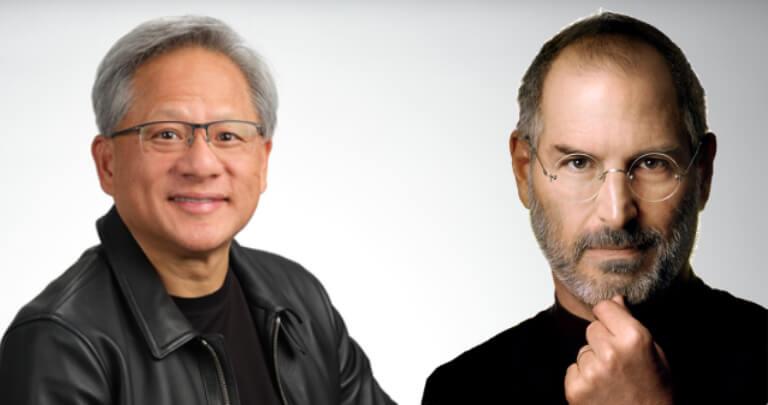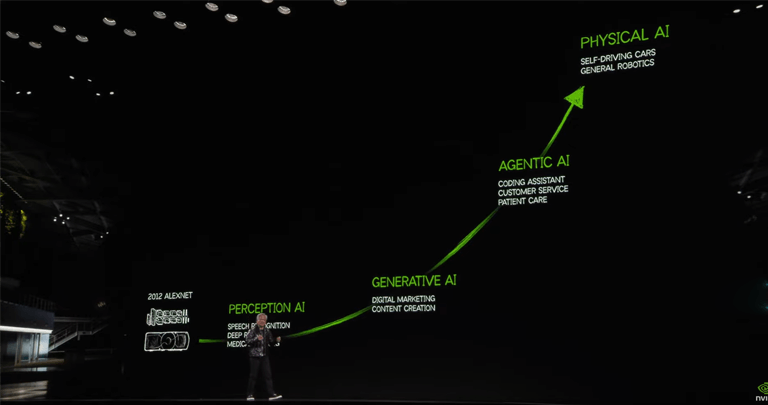How NVIDIA's visionary founder redefines the tech industry


Jensen Huang is often hailed as one of the most
influential figures in technology today. As the President, Co-founder, and Chief Executive Officer (CEO) of NVIDIA, he has
been at the forefront of revolutionary innovations — especially in the realm of Artificial Intelligence (AI). Under
his leadership, NVIDIA has risen to become not just a leader in Graphics Processing Units (GPUs), but also one of the most
valuable and respected tech companies in the world. With a business journey that mirrors the breakthroughs and risk-taking
spirit of notable tech giants such as Steve Jobs (and, in earlier decades, Bill Gates), Huang has now reached a status where
many consider him a pivotal force shaping the future of technology.
Below, we explore the rise of Jensen Huang and NVIDIA,
followed by a comparison to Steve Jobs and Bill Gates, highlighting their shared traits of vision, leadership, and relentless
pursuit of innovation.
A visionary leader in the age of AI
Jensen Huang’s reputation stems largely from
NVIDIA’s transition from a company predominantly known for gaming GPUs to a powerhouse in AI, data centers, and autonomous
driving solutions. By recognizing early on that GPUs had immense potential for parallel computing, Huang steered NVIDIA to
explore new markets where vast computational power could be leveraged, most notably Machine Learning and Deep Learning.
· AI dominance: Under his watch, NVIDIA’s GPUs became essential for AI research, powering everything from data analytics to self-driving cars.
· Company growth:
This strategic pivot led NVIDIA to exceptional market growth, culminating in a multi-billion-dollar valuation and positioning
the firm as a central player in tech infrastructure.
The similarities with Bill Gates and Steve Jobs
When comparing Jensen Huang to the industry titans
who came before him, it’s natural to note some striking parallels:
Innovative beginnings
Bill Gates, recognized for Microsoft’s early
dominance in the 80s and 90s, championed the proliferation of personal computing. Steve Jobs, after his initial success, returned
to Apple in the late 90s and early 2000s to revolutionize not just personal computers, but also music players, smartphones,
and tablets.
Huang, in turn, capitalized on a new wave —
AI and high-performance computing — catapulting NVIDIA into an unprecedented growth trajectory and reimagining how computational
tasks could be handled on a massive scale.
Vision paired with tenacity
Gates was relentless in securing Microsoft’s
role as a software standard. Jobs was famous for his exacting standards and visionary product design. Huang combines both
approaches, driving NVIDIA to dominate a specialized hardware niche (GPUs) and then transforming it into a critical tool for
the entire AI industry.
Market transformation
Microsoft locked in market share by setting the
standard for operating systems and office productivity software. Apple’s brand exploded with the rebirth of the Mac,
the iPod, and eventually the iPhone, forever changing consumer electronics.
NVIDIA, under Huang, became indispensable to AI
researchers, effectively dictating the direction of AI hardware. As AI becomes integrated into countless services and devices,
NVIDIA’s role is set to expand even further.
Why Huang may hold the same status today
Given the meteoric rise of AI and the foundational
nature of GPUs in this field, Jensen Huang’s influence parallels that of Steve Jobs and Bill Gates during their prime.
Like Jobs, Huang is known for his charismatic presentations, his ability to foresee future trends, and his unwavering belief
in the transformative power of his company’s technologies. Furthermore, like Gates, Huang’s strategic acumen has
positioned NVIDIA at the heart of a technological revolution — one that stretches far beyond consumer gadgets into the
backbone of modern computing and data analysis.
Lessons for modern businesses
For entrepreneurs and businesses aiming to mimic
NVIDIA’s success, several key lessons emerge:
· Identify the next big shift: Just as Huang foresaw the potential of GPUs in AI, leaders should keep an eye on emerging trends and position their
offerings accordingly.
· Relentless innovation: Continuous research and development can set a company apart. Whether it’s software, hardware, or a service-based
model, staying on the cutting edge is crucial.
· Focus on strategic niches: By dominating a particular niche - like NVIDIA did with GPUs - you can carve out a defensible position before expanding
into broader markets.
· Cultivate a bold culture: A willingness to take risks and invest in unproven areas often yields significant long-term rewards.
Conclusion
Jensen Huang’s journey mirrors the visionary
traits that defined both Steve Jobs and Bill Gates in their respective eras. Through relentless innovation, strategic foresight,
and an unyielding commitment to excellence, he has ushered NVIDIA into a new technological frontier where AI is king. As the
pace of AI adoption accelerates, Huang’s influence will likely grow even stronger, reinforcing the idea that we are
witnessing the emergence of a new household name in the tech industry — one that stands shoulder to shoulder with history’s
most celebrated visionaries.




